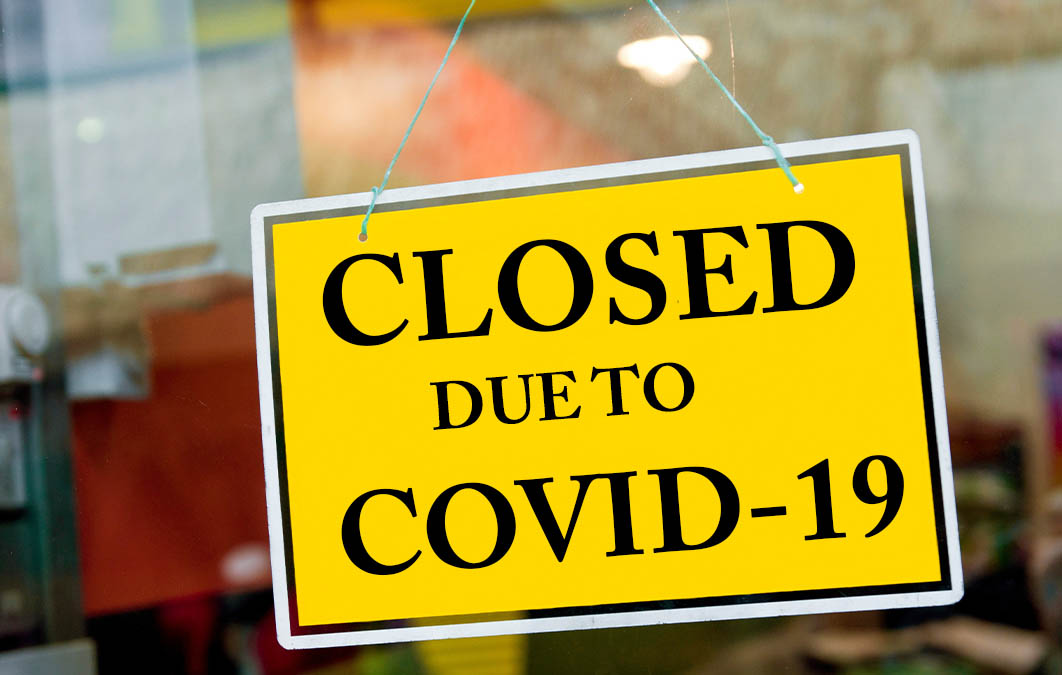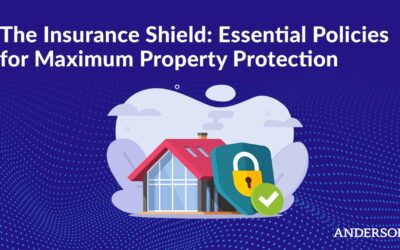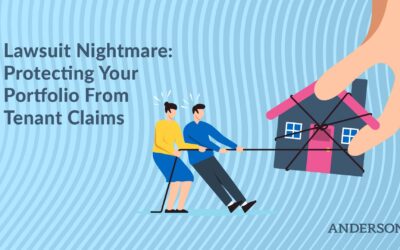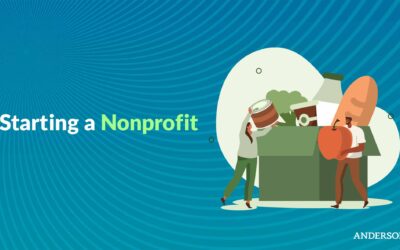Updated September 24, 2021
The federal government fast-tracked two pieces of legislation designed to address the needs of small businesses and employees impacted by COVID-19. A third primary piece of legislation is still under consideration, with approval pending Congress’s ability to work together. Each piece of legislation is outlined here.
You may also find additional information from the SBA website about the COVID-19 Loan program here.
Legislation Phase I
“Coronavirus Preparedness and Response Supplemental Appropriations Act, 2020” (read in full here)
This Act (H.R. 6074) passed March 6th, 2020, and included a provision to fund SBA Economic Injury Disaster Loans (“EIDLs”) for businesses affected by COVID-19. The loans will not have to go through the lender approved network and will instead be made directly by the SBA.
HOW TO APPLY FOR AN EIDL LOAN
- Qualifying small businesses and non-profits operating in states or territories covered by a US SBA Economic Injury Disaster Loan assistance declaration related to the Coronavirus/COVID-19 pandemic disaster should submit applications for EIDL loans online, through the US SBA’s website here.
- As part of the EIDL application process, a small business applicant must submit a signed and dated IRS Form 4506-T, which allows the IRS to release the applicant’s tax returns for the previous tax year to the US SBA. Documents required for Filing are listed below.
- The US SBA has a goal of reviewing and processing all EIDL loan applications within 21 days of receipt of a complete application from a qualifying Small business or non-profit.
US SMALL BUSINESS ADMINISTRATION ECONOMIC INJURY DISASTER LOAN PROGRAM SUMMARY
WHO IS ELIGIBLE FOR A US SBA EIDL LOAN?:
- Small businesses, small agricultural cooperatives, and private non-profit organizations without access to credit through traditional lending sources who have suffered a “substantial economic injury” as a result of the Coronavirus/COVID-19 pandemic.
- The US SBA evaluates EIDL applications to determine if an applicant small business is unable to obtain credit from alternate sources, as only those small businesses that lack access to credit through alternate traditional private lending sources are eligible for an EIDL.
- “Substantial economic injury” means the applicant small business or non-profit presently is unable to meet its obligations to pay its ordinary and necessary operating expenses, such as rent or payroll.
FUNDS MAY BE USED TO:
- Pay fixed debts
- Payroll
- Accounts payable
- Employee sick leave
- Other bills that cannot be paid due to the disaster’s impact Funds may not be used to:
- Refinance debts incurred prior to the disaster event
- Make payments on other loans owned by another federal agency or the SBA
- Pay tax penalties or non-tax criminal/civil fines
- Repair physical damage, or
- Pay dividends or other disbursements to owners or partners except as related to their performance of services for the business
Free Strategy Session with an Anderson Advisor
Receive a detailed risk assessment to assist in lowering problem areas that could wipe out all of your assets with one wrong move. Speak with an Anderson Professional Advisor to get your FREE Strategy Session.
Limited-Time Offer: ($750 value.)
TERMS OF A US SBA EIDL LOAN:
- The US SBA will make loans up to $2,000,000 available to meet financial obligations and operating expenses that could have been met by the qualifying small business or non-profit organization had the Coronavirus/COVID-19 pandemic disaster not occurred. Certain qualifications apply.
- Factors considered by the US SBA in issuing an EIDL loan and determining the amount of the EIDL loan:
- The Small Business’s total debt obligations;
- The aggregate amount of operating expenses that mature during the period impacted by the Coronavirus/COVID-19 pandemic disaster and the small business’s anticipated working capital needs during the same period; and
- Expenses the qualifying small business could have met at a working capital position it could have maintained had the Coronavirus/COVID-19 disaster not occurred.
- Interest Rates: The applicable interest rates for EIDL loans are:
- 3.75% for small businesses; and
- 2.75% for non-profits.
- Credit History: Applicants for EIDL loans must have a credit history acceptable to the US SBA and be able to show their ability to repay the US SBA.
- Collateral: All EIDL loans for initial principal amounts greater than $25,000 require some formal collateral to secure the qualifying small business’s debt obligation to the US SBA.
- Real estate is an acceptable form of collateral.
- Although the US SBA will not reject an application for an EIDL loan solely for lack of collateral, small business applicants are required to pledge whatever collateral is available to them.
- Term of Loan:
- The maximum term of an EIDL loan is 30 years.
- The US SBA determines the appropriate loan terms for qualifying small businesses on a case-by-case basis, based on each particular small business borrower’s ability to repay the EIDL loan.
- Financial Statements and Personal Guarantees:
- The US SBA requires submission of a personal financial statement for each partner, officer, director and stockholder with 20% or greater ownership in the applicant small business with the EIDL loan application.
- The US SBA generally requires personal guarantees from the principals of the applicant small business.
- Additional Documentation of Losses:
- In order for the SBA to understand an applicant small business’s current financial condition relative to its financial condition during a period of normal operations, an applicant small business must furnish balance sheets and profit and loss statements for a similar time period, to serve as a point of reference for the US SBA.
- The US SBA will request an applicant small business to submit such comparative financial statements during the EIDL loan application process.
- Restriction on Use of EIDL Loan Funds:
- The US SBA makes EIDL loans for specific and designated purposes.
- Small business borrowers in receipt of EIDL loan funds must use the such funds for the particular purposes designated by the US SBA, such as for working capital or to meet ordinary expenses, such as payroll.
- Small business borrowers in receipt of EIDL loan funds are prohibited from using such loan funds for purposes outside of those parameters designated by the US SBA.
- For example, a small business borrower cannot use EIDL loan funds to expand or diversify its business operations.
- Insurance: The US SBA may require a qualifying small business borrower to obtain appropriate insurance coverages, in order to secure repayment of the EIDL loan and protect the borrower.
- Documents Required for Application (some of these are covered if applying online):
- SBA Disaster Resources
- SBA 3 Step Process
- SBA Loan App Sole Proprietor
- SBA Loan App LLC, Corp, Partnership, etc
- Fee Disclosure Form
- Instructions for IRS Form 4056-T
- IRS Form 4056-T
- Personal Financial Statement
- Schedule of liabilities
- Monthly Sales Figures
Legislation Passed – Phase II
“Families First Coronavirus Response Act” (read in full here)
The Families First Coronavirus Response Act (H.R. 6201) passed on March 18, 2020 included provisions to give paid leave to workers who did not have paid sick leave and extend paid leave to workers who only had a few days. The Act also expanded unemployment benefits with nearly $1 billion in additional funding to states.
Tax & Asset Protection Workshop
Learn about Real Estate & Asset Protection at our next
FREE LIVE STREAM
PAID SICK LEAVE BENEFITS ANALYSIS
The Families First Coronavirus Response Act requires private employers with fewer than 500 workers and all public employers to provide paid sick leave to employees affected by the coronavirus (exceptions for health care providers, emergency responders and certain small businesses are allowed). Full-time workers get up to 80 hours of sick leave, while part-time workers get sick leave for the average number of hours they work over a two-week period. A worker is only able to take paid leave if he or she is:
- Subject to a federal, state or local coronavirus quarantine or isolation order;
- Advised by a health care provider to self-quarantine due to coronavirus concerns;
- Experiencing coronavirus symptoms and seeking a medical diagnosis;
- Caring for someone else who is subject to a coronavirus-related federal, state or local quarantine or isolation order, or who has been advised by a health care provider to self-quarantine due to coronavirus-related concerns;
- Caring for a son or daughter if the child’s school or daycare has been closed, or the child’s care provider is unavailable, due to coronavirus precautions; or
- Experiencing any other substantially similar condition specified by the Secretary of Health and Human Services.
Workers who are sick or quarantined get full pay while on coronavirus leave, up to $511 per day ($5,110 in total). Workers caring for another person or on leave because of an HHS-specified condition get two-thirds of their normal pay while on leave, up to $200 per day ($2,000 in total).
The new law also extends the existing Family and Medical Leave Act (FMLA) to cover a worker’s absence (including an inability to telework) to care for a minor son or daughter if the child’s school or daycare has been closed, or the child’s care provider is unavailable, because of the coronavirus.
Workers receive two-thirds of their regular salary while on coronavirus-related FMLA leave, but compensation is capped at $200 per day and $10,000 in total. However, this leave does not kick in until after 10 days. (During that time, workers are presumably able to take sick leave as described above.)
The expanded FMLA provisions apply to employers with fewer than 500 employees, but not to certain health care providers and emergency responders. Exemptions are also available for small businesses with fewer than 50 employees if the new requirements jeopardize the business’s viability.
Any wages paid as coronavirus sick or family leave aren’t subject to Social Security (or Railroad Retirement) payroll taxes paid by employers.
TAX CREDITS FOR EMPLOYERS ANALYSIS
While employers initially have to foot the bill for the new sick and family leave benefits, at least some of the costs are paid back through refundable tax credits against the 6.2% Social Security (or Railroad Retirement) payroll tax imposed on employers. The credits are, however, subject to certain restrictions and limitations.
For the new sick leave benefits, the credit is limited to $511 per day for workers taking leave because they are sick or quarantined. The limit is $200 per day for workers taking leave to care for another person or on leave because of an HHS-specified condition. The credit is further reduced by a 10-sick-days-per-worker limit.
For the expanded FMLA benefits, the credit is limited to $200 per day, per employee. The credit also can’t exceed $10,000 in total for any worker.
Employers are also given additional payroll tax credits for group health plan costs for, and the 1.45% Medicare payroll tax on wages paid to, workers on coronavirus sick or family leave.
TAX CREDITS FOR SELF-EMPLOYED ANALYSIS
Self-employed people are not left out in the cold. They receive refundable tax credits against the self-employment tax that are similar to those allowed for employers.
The sick leave credit is based on a self-employed person’s “qualified sick leave equivalent amount.” That amount is equal to (1) up to 10 days during the year that the person can’t work for the reason that would entitle them to coronavirus-related sick leave if he or she were an employee, (2) multiplied by the lesser of:
- $511 per day for people who are sick or quarantined, or $200 per day for people caring for another person or on leave because of an HHS-specified condition; or
- 100% of a sick or quarantined person’s average daily self-employment income for the year, or 67% of the average daily self-employment income for a person caring for another person or on leave because of an HHS-specified condition.
A self-employment tax credit is also available for 100% of a person’s “qualified family leave equivalent amount.” That amount is equal to (1) up to 50 days during the year that the person can’t work for the reason that would entitle them to coronavirus-related family leave if he or she were an employee, (2) multiplied by the lesser of:
- $200; or
- 67% of the person’s average daily self-employment income for the year.
The Third Phase and Legislation Not Yet Passed (As of March 23, 2020)
“Coronavirus Aid, Relief, and Economic Security Act or CARES Act” and specifically Division A of this Act called the “Keeping Workers Paid and Employment Act” – Senate Version
This bill is currently under consideration with passage expected soon – if Congress can get past the issues of working together and leaving politics out. The proposed financial provisions of this Act include stimulus checks (“recovery rebates”) to taxpayers, creation of a small business interruption loan program under the Small Business Act, allows for tax-favored “coronavirus-related” distributions from certain retirement plans of up to $100,000, bailouts to severely distressed sectors of the economy (airlines, hospitality, etc.), extension of tax filing deadlines, and other minor financial related relief measures (student loans, aviation excise taxes relief, and charitable contributions modifications)
STIMULUS CHECKS ANALYSIS
The proposed bill authorizes direct payments of $1,200 per qualifying adult – $2,400 for married couples filing jointly – and $500 per child, a program that is projected to cost around $250 billion. The cash disbursements in the new agreement would start to phase out for those with incomes of $75,000 and above. Families at the bottom – those with no federal income tax liability – would receive less money, but no less than $600. The legislation also includes about $100 billion for hospitals and about $250 billion to beef up state unemployment insurance programs.
SMALL BUSINESS INTERRUPTION LOAN PROGRAM
The bill would expand eligibility for certain small businesses (those under 500 employees) to receive loans under the SBA 7(a) Loan Program.
Defines the covered loan period as beginning on March 1, 2020 and ending on December 31, 2020.
Defines eligible businesses as those businesses with fewer than 500 employees, unless the covered industry’s SBA size standard allows more than 500 employees.
Allows non profit entities to be eligible for loans made under this Act.
Other details from the program:
- To provide continuity of employment through business interruptions, this provision would authorize the creation of a small business interruption loan program.
- The US government would provide a 100% guarantee on any qualifying small business interruption loan.
- Qualifying loan terms:
- Eligible borrowers: Employees with 500 employees or less
- Loan amounts: Maximum of US$10 million (a factor of the average monthly payments by an applicant for payroll, mortgage payments, rent payments and other debt obligations during the one-year period before the date on which the loan is made)
- Uses of loan:
- Paid sick, medical or family leave
- Costs related to the continuation of group healthcare benefits during periods of leave
- Employee salaries
- Mortgage payments
- Any other debt obligations
- Loans would be forgiven if employers maintain their payroll during the covered period (March 1, 2020 – June 30, 2020).
- Individual employees in excess of US$33,000 during the covered period are not eligible for loan forgiveness
- Qualified sick leave wages under Sections 7001 and 7003 of Public Law 116-127
Families First Coronavirus Response Act are not eligible for loan forgiveness.
- SBA application fees would be waived.
- LOAN FORGIVENESS
- Provides a process by which borrowers who receive this loan to be eligible for loan forgiveness in an amount equal to the payroll costs incurred during the covered period and payments debt obligations that were incurred before the covered period for the period of March 1, 2020 through June 30, 2020.
- The amount of the loan eligible for forgiveness will be reduced proportionally by the number of employees laid off during this period relative to the borrower’s prior employment levels.
- For the purposes of determining forgiveness amounts, payroll costs will exclude the compensation of any employees in excess of $100,000 in annualized compensation and qualified sick leave and qualified family leave wages enacted by the Families First Coronavirus Response Act.
- Lenders would verify payroll costs and payments made on debt obligations. Forgiveness amounts would not be included in taxable income.
- SBA EXPRESS LOAN
- Increases the maximum loan for an SBA Express loan from $350,000 to $1 million through December 31, 2020, after which point the Express loan will have a maximum of $500,000.
- WAIVER OF PREPAYMENT PENALTY
- Removes any prepayment penalties for loans made under this title on or before December 31, 2020.
- UNITED STATES TREASURY PROGRAM MANAGEMENT AUTHORITY
- Allows the Department of Treasury, in consultation with the SBA, and other Federal financial regulatory agencies, to establish a process by which lending institutions that are not currently authorized to offer SBA loan products are able to provide SBA small business interruption loans for the length of the President’s national emergency declaration.
- Allows the Treasury to determine the eligibility criteria and terms for the lenders they approve to disseminate small business interruption loans and to write regulations outlining these criteria and terms
For additional assistance, please visit SBA Disaster Loan Assistance, call the SBA Disaster Assistance Customer Service Center at 1 (800) 659-2955 or 1 (800) 877-8339, or email at the following: emaildisastercustomerservice@sba.gov. If you need any assistance navigating the program or have any questions about SBA’s Economic Injury Disaster Loan (EIDL) Program, please contact any of the contacts listed above.
Free Strategy Session with an Anderson Advisor
Receive a detailed risk assessment to assist in lowering problem areas that could wipe out all of your assets with one wrong move. Speak with an Anderson Professional Advisor to get your FREE Strategy Session.
Limited-Time Offer: ($750 value.)















